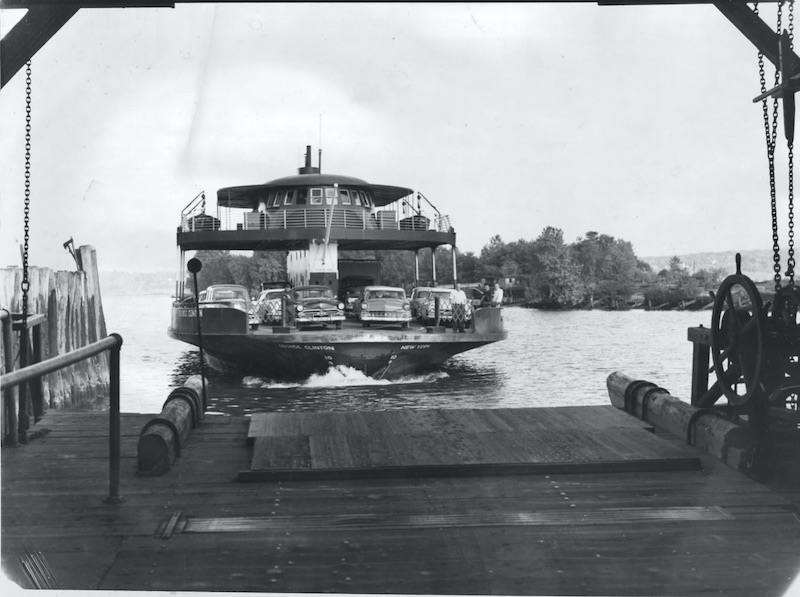Hudson River Maritime Museum
Kingston-Rhinecliff ferry slip
People and cars once sailed across the Hudson here.

Kingston-Rhinecliff Ferry George Clinton coming into the Rondout ferry slip, c. 1950. Donald C. Ringwald Collection, Hudson River Maritime Museum.
HV History Hunters! Look for the sign about the Ferry on the Rondout Promenade for your photo.
-
- On Aug. 5, 1752, businessmen Jacob Kip and Moses Cantine received the approval of the Colonial government of New York to operate a ferry across the Hudson River, between the City of Kingston, Ulster County, and Rhinecliff, a hamlet in the Town of Rhinebeck, Dutchess County. The terms of the license allowed the partners to operate ferry service there forever.
- Following the American Revolution and the establishment of a state government to replace the Colonial government, agreements with regard to ferry service stayed in place. While rates did increase every year as per the state’s approval, ferry operators continued to be protected from being intruded on by any competing service established within the documented operating zone.
- The original ferry service, named the Rhinebeck and Kingston Ferry Company, stayed in operation for more than 200 years.
- On the east side of the river, the Kip family owned the ferry service until 1790 when it passed into the hands of the Elmendorph family. Samuel, Jacob, Cornelius and John Elmendorph relocated to Rhinebeck prior to the American Revolution. While earlier ferries were powered by oars and sails, under the Elmendorph rein, the open air horse boat was introduced. Horses walked on a conveyor belt of sorts to power the vessel. The Elmendorphs sold the ferry company in 1851 and in later years, steam power replaced the horse-driven vessels.
- During World War ll, service on the ferry line became inconsistent and in 1944, the company dissolved. For two full years ferry service between Kingston and Rhinecliff was non-existent until it resumed in 1946. Because no independent business owners could be enticed into acquiring the operation, the New York State Bridge Authority stepped in and operated it; that oversight remained in place until late 1956.